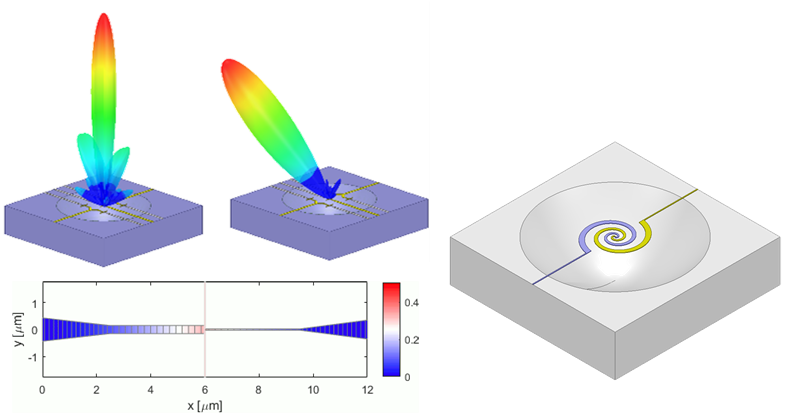Design of Thermoelectric Coupled Nanoantennas
Uncooled infrared sensors rely on transducing the temperature rise of a thermal mass which absorbs the incident energy. Regardless of the transduction mechanism, this results in devices that are limited to frequencies below 120 Hz which is significantly slower than cooled semiconductor devices. Using a resonant metal antenna can maximize the effective aperature of the detector while minimizing the thermal mass. Antenna engineering concepts can be used to give the detector polarization, wavelength, and angle of incidence selectivity while providing a time constant less than 5 µs. Thermally isolating the antenna increases the sensitivity. Etching a cavity into the substrate, beneath the antenna, limits thermal conduction and can serve as an optical element to increase the gain of the antenna. This offers competitive specific detectivity with increased bandwidth and the selective gain provided by the antenna with applications for spectroscopy, lens-free imaging and situational awareness.
